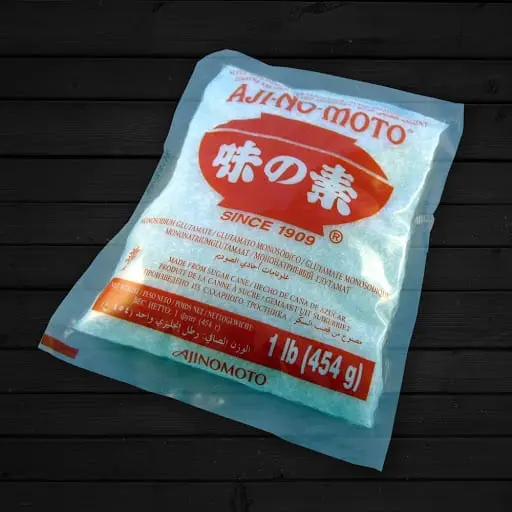Contents
Among the myths, misconceptions and rumors associated with the national cuisine and fast food, there are many legends about MSG. And along with other substances with similar names.
Who is who?
Glutamic acid, glutamine and monosodium glutamate are often confused with each other. In fact these are three completely different substances.
Glutamic acid and glutamine are amino acids.
Monosodium glutamate (or glutamate) is the sodium salt of glutamic acid synthesized artificially. It has another name – monosodium approved for sodium.

Why are they necessary for the body?
Glutamic acid and glutamine is one of the main building materials of the human body.
They are among the twenty amino acids from which are built all proteins and many other biologically active substances that have a protein structure: receptors, hormones, enzymes.
In addition, these amino acids are themselves biologically active substances. Glutamic acid and glutamine is a neurotransmitter. This substance, which occurs due to the transmission of nerve impulses from one nerve cell to another.
Glutamic acid is a weak nootropic substance improving the functioning of the brain.
Glutamine in the body can be transformed into glutamic acid.
The fifth taste
In the early XX century in Japan they received a patent on the production of the sodium salt of glutamic acid – monosodium glutamate. Because monosodium glutamate – soluble salt, in water it exists as two ions: sodium ion and a glutamate ion.
Ion of glutamate increases the sensitivity of the taste receptors of the tongue and creates a sensation of special “meat” taste. Since there are four basic tastes: sour, sweet, bitter and salty – in Japan it is called “the fifth taste” — umami.
Exactly because of this property of glutamic acid and its salts (sodium glutamate and others) are used as food additives – flavour enhancer.
Their designations are: E 620 (glutamic acid), E 621 (glutamate sodium), E 622-625 (glutamate potassium, calcium, magnesium and ammonium).
Monosodium glutamate is often used. In very many food products (first of all, the “meat” of the soups and sausages) can be found on the packaging E 621.
Is it possible to poison yourself with glutamate?

There is a perception that consumption of monosodium glutamate and glutamic acid as food additives is dangerous to health.
However, until now no evidence of direct harm to the body of these substances in the concentrations used for food production was found.
Experiments conducted on animals have shown that injury can be, if there is glutamate spoons in the truest sense of the word.
That is why food additives E620-E625 approved for use in Europe, USA and Russia.
Is it possible to find food without glutamate?
In the literature you can find advice – eat products that do not contain glutamate and glutamic acid. In practice, this is impossible.
Because glutamic acid is in proteins, almost in all protein products there are two kinds of glutamate. It is linked glutamate in the composition of the protein and a certain amount of free glutamate occurred in the result of protein degradation.
Here is some data:
| Product | The number of bound glutamate, mg/100 g | The amount of free glutamate, mg/100 g |
| Cow’s milk | 819 | 2 |
| Parmesan cheese | 9847 | 1200 |
| Egg | 1583 | 23 |
| Chicken | 3309 | 44 |
| Duck | 3636 | 69 |
| Beef | 2846 | 33 |
| Corn | 1765 | 130 |
| Green peas | 5583 | 200 |
| Tomatoes | 238 | 140 |
Real harm
Due to the fact that glutamate enhances the flavor of any food and makes it extremely rich, people gradually get used to such a “bright” food.

Gradually products without glutamate start to seem bland and tasteless, and the meal with “the fifth taste” is addictive. As a result of its consumption increases.
Because glutamate is widely used by manufacturers of fast food, the pursuit of specific taste of the person goes to an unbalanced diet with excess calories and quickly gaining weight.
So, according to a study conducted in China, the consumption of food rich in monosodium glutamate, indeed, increases the chances to gain excess weight.
Not to overdo the sodium glutamate and related supplements, it is important to follow a few simple rules:
— If possible, avoid fast food: the burgers and sausages flavor enhancers are added very often
— Cook at home from bought on the market or in the supermarket raw food,
— Do not use the mixes of spices and additives “for soup”, “second courses”, buy pure unmixed seasonings
— Carefully read the labels of the composition of packaged meat and sausage products. If you meet a E 620, E 621, E 622, E 623, E 624 or E625 – the product is glutamate.
What you need to know?
Glutamic acid and glutamine – the most important substances for the functioning of the human body.
Monosodium glutamate is a safe food additive by itself, but its misuse can lead to weight gain.










